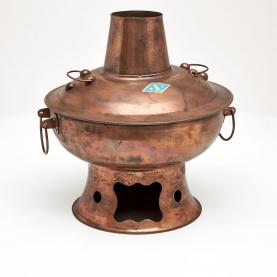A New Year's feast in Shanghai
The Song family from Shanghai made Chinese dumplings and other delicacies. We had the opportunity to watch.
Yunlong Song lives in Switzerland; his parents live in Shanghai. He is returning home to China for the Spring Festival and celebrating this traditional holiday with his family.
For the Chinese, the Spring Festival, or chunjie, – also known as Chinese New Year – is the most important holiday of the year. It is calculated according to the traditional Chinese calendar (a lunar calendar or nongli) and takes place in January or February. Almost all of the Chinese return to their hometown, to their parents, so that they can celebrate with their extended family. Aeroplanes and trains are bursting to the seams. Every year, the media reports on this event, which – in these dimensions – is a unique spectacle of mass emigration.
During the Spring Festival, each family makes a traditional meal: one they don’t eat every day. Priority is given to chicken, duck and fish: that way, the table is decked with something from the air, the water, and something that lives on the earth. With these celebrations, the Chinese associate the hope that their lives in the next year will be both diverse and plentiful. In Shanghai, a New Year’s cake made of rice is also a must. The idea behind this is a play on words, for in Mandarin “cake” and “top” have precisely the same pronunciation, namely gao. Consequently, “New Year’s cake” sounds something like “May the year be top!” People hope that their incomes will rise, that they will have a better position at work, or simply that the children will grow.
Coming together to fill dumplings (jiaozi) is also an absolute must on the eve of the Spring Festival. First the dough is made and then the filling added, which may consist of meat, eggs, shrimps or seasonal vegetables. In keeping with an old custom, the dumplings are then boiled in water. While they are being eaten they are dipped in vinegar, soya sauce, sesame oil and chopped garlic.
New Year jiaozi are filled with highly symbolic ingredients. Peanuts, for instance, stand for long life; dates symbolize sweetness; and chestnuts, good luck. People even put coins in the filling, as a sign that those who bite into them will become rich during the coming year and their business will go well. Obviously everyone wants to get the dumplings with the money, but they have to watch out and chew carefully, lest this blessing turn into a curse.
Before the celebrations begin, the meal must be “sacrificed” at the family altar to spirits and ancestors. Different strict rules regulate how individual spirits may be summoned or seen off – depending on the date.
For this year’s feast, it was my eldest sister’s turn to make a meal. She had carefully considered the dishes and the ingredients in advance, taking our family’s preferences into account. So in the evening, she just went ahead and started cooking everything.












